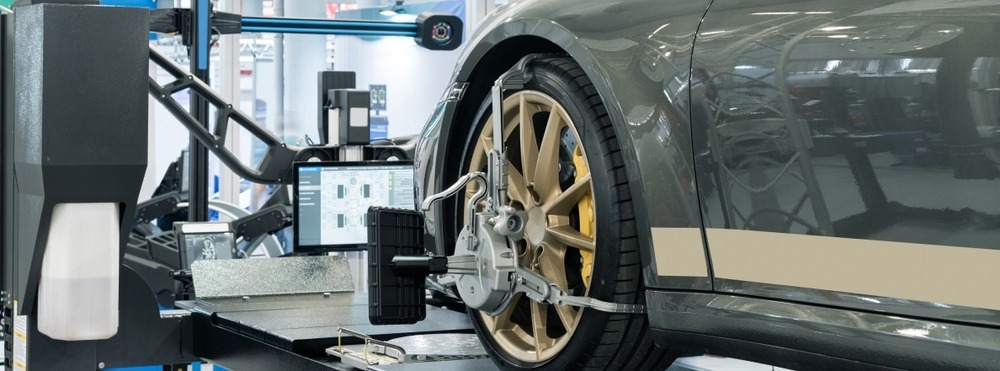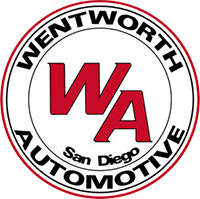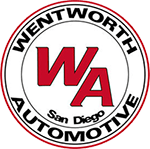When Does A Wheel Alignment Really Benefit My Car?
- September 13, 2024
- Posted by: Wentworth
- Category: Wheel Alignment

Do you ever feel like your car has a mind of its own? You want it to drive straight ahead, but instead, you are constantly adjusting the steering wheel to correct your course. Well, the good news is, your car isn’t being temperamental because you still haven’t washed the bird poop off its hood. The better news is that you can schedule a wheel alignment service to address that car drift issue, and the tire tread wear or worn suspension you may not have noticed yet.
What is Wheel Alignment?
Wheel alignment defines the position of your vehicle’s wheels in relation to each other, the suspension system, the road, and the steering wheel. Automobile wheels should be parallel to each other, plus perpendicular to the road. In layperson’s terms, if your steering wheel is centered and facing straight ahead, so should your front wheels. However, if your steering wheel position is off-center when driving straight forward, then your wheels are misaligned. Correcting wheel alignment issues requires three different settings, measured in tiny increments using specialized equipment by highly trained auto technicians.
Wheel Adjustments
Toe
Wheels can be ‘Toe-in,’ meaning they point slightly inwards, or ‘Toe-out,’ meaning they point slightly outwards. The amount a vehicle points’ toe-in’ or ‘toe-out’ can vary by make/model and is factory set to provide a solid feeling to the steering while preventing the need to constantly readjust the steering wheel to continue moving forward in a straight line.
Camber
The camber refers to the wheel’s angle when looking at it from the front. If the top of the wheel tilts in towards the engine, it is called a ‘negative camber.’ If the wheel’s top tilts away from the engine, it is called a ‘positive camber.’ Camber increases steering stability while helping the tire grip the road surface.
Caster
The caster refers to the pivot angle of the front suspension. Almost all car designs use three to six degrees of positive caster. A forward or front-pointing angle is called a ‘positive caster.’ A center or straight up-and-down pointing angle is called a ‘neutral caster.’ A backward or rear-pointing angle is called a ‘negative caster.’ Unlike the frequently adjusted camber and toe, the caster rarely requires adjustments unless it exceeds the manufacturer’s recommendations. On some economy model vehicles, the caster may not be adjustable at all.
Common Symptoms Of Misalignment
Wheel misalignment occurs naturally over time under standard driving conditions, but a few things can create issues suddenly. Minor collisions, large potholes, road debris, and using the curb as a ‘parking aid’ can affect your vehicle’s wheel alignment. If you notice a drop in vehicle handling or performance, take note of other symptoms like those noted below. Then, schedule a service with your auto technician to diagnose and repair the problem.
Uneven Tire Tread Wear
Address excessive or uneven wear on your tires as soon as possible. Engineers spend a lot of time designing tire treads to wear evenly. However, routine maintenance (like tire rotations, wheel balancing, and wheel alignment) is the key to getting the most effective tread wear out of your tires. If your tire tread looks more visibly worn on one side of the tire, your wheels need servicing.
Car Drift
Your car should always move forward in a straight line unless you purposefully turn the wheel to change direction. If your vehicle pulls to one side, even while holding the steering wheel straight, that is car drift. Continuously adjusting the steering wheel to maintain straight ahead motion may indicate the need for a wheel alignment service.
Steering Wheel Vibrations
Feeling vibrations or a shaking sensation while holding your car’s steering wheel is frequently caused by misaligned wheels. Steering your vehicle with ease is a necessity for vehicle stability. Any time you experience a loss of steering or notice vibrations, schedule a diagnostic service right away.
Worn Suspension Components
Your vehicle’s suspension system can also directly impact wheel alignment. The camber angle can change if your car has damaged or worn suspension parts (ball joints, tie rods, or shocks & struts). Faulty or worn suspension components require repair or replacement before completing a wheel alignment service.
Wheel Alignment Service in San Diego, CA
If you think your vehicle requires a wheel alignment, bring it to Wentworth Automotive. We have a specialized lift and the precise measurement equipment to identify and correct wheel alignment issues. Our team of experienced auto technicians will diagnose if a worn suspension part is creating your vehicle’s uneven tire tread wear and causing car drift.
Schedule A Wheel Alignment Service
Call us at (858) 541-1044 or visit our website to schedule your wheel alignment service.

